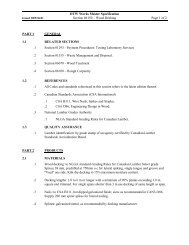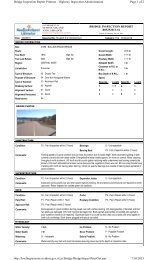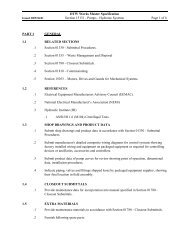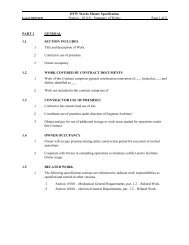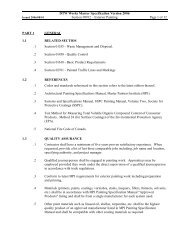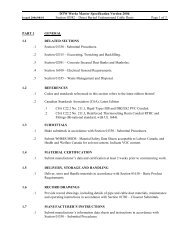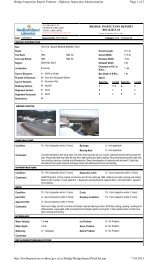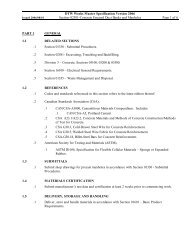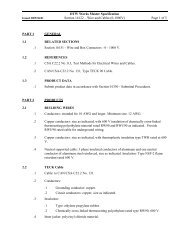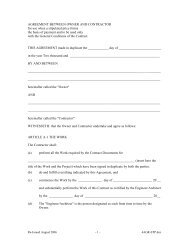EMCS: Site Requirements, Applications and Systems Sequences of ...
EMCS: Site Requirements, Applications and Systems Sequences of ...
EMCS: Site Requirements, Applications and Systems Sequences of ...
Create successful ePaper yourself
Turn your PDF publications into a flip-book with our unique Google optimized e-Paper software.
DTW Works Master SpecificationSection 13846 <strong>EMCS</strong>: <strong>Site</strong> <strong>Requirements</strong>, <strong>Applications</strong>Issued 2005/06/01 <strong>and</strong> <strong>Systems</strong> <strong>Sequences</strong> <strong>of</strong> Operation Page 13 <strong>of</strong> 19.5 On a boiler trip or alarm condition, the lead/lag system shall automaticallystart the next boiler in the sequence <strong>and</strong> alarm the trip condition..6 Status <strong>and</strong> elapsed time shall be provided for call for heat, low fire <strong>and</strong>maximum firing rate..7 The lead/lag system shall incorporate the ability for each boiler to be rununder local (boiler) control panel only for testing purposes..8 The lead/lag system shall reset to commissioned operating conditions inthe event <strong>of</strong> power interruption <strong>and</strong> automatically restart <strong>and</strong> control theboilers to return to normal operation..10 Domestic Hot Water Heat Exchanger Control.1 One <strong>of</strong> the domestic hot water pumps shall run continuously to circulateDHW from the tanks through the heat exchanger <strong>and</strong> back to tanks. Thepumps shall be alternated on a timed schedule <strong>and</strong> the lag pump shall startshould the lead pump fail..2 The heat exchanger steam valves shall be modulated as required tomaintain the leaving water temperature at its setpoint <strong>of</strong> 70°C..3 The exchangers must be able to operate in parallel (normal) or in isolationshould one <strong>of</strong> the exchanger circuits be down for maintenance. Normaloperation is for one <strong>of</strong> the heat exchangers to operate to carry the load..11 Isolation Room Controls.1 A volumetric air control system shall be used to control airflow <strong>of</strong>fset,airflow tracking between supply <strong>and</strong> exhaust air variable volume boxes,provide stable room pressure <strong>and</strong> room environment, monitor room airpressure <strong>and</strong> environmental conditions <strong>and</strong> be capable <strong>of</strong> communicationslink with the <strong>EMCS</strong>..2 Volumetric control shall be capable <strong>of</strong> direct pressure reset applications..3 Isolation room control system to be complete with a <strong>EMCS</strong> basedvolumetric controller, velocity sensors for both supply <strong>and</strong> exhaust airflow, room pressure sensors to monitor pressure between both isolationroom/anteroom <strong>and</strong> anteroom/hospital space, remote alarm panel, filteralarms for HEPA filters, <strong>and</strong> integration with room temperature controlloop..4 Volumetric control shall receive signal from velocity sensors to regulateflow via control regulation <strong>of</strong> variable volume box dampers. Volumetriccontrol to reset airflow differential setpoint through the direct pressurereset control loop..5 Room pressure sensor to be a through the wall device with one endmonitoring the space <strong>and</strong> the other monitoring either the anteroom or theadjacent building corridor. Wall mounted room monitor controller shallreceive differential pressure readings from each room pressure sensor atfrequent intervals <strong>and</strong> display current value on the LCD display..6 Room monitor controller shall be complete with LCD display, key switchcontrol for change in containment state (positive (+), negative (), or



